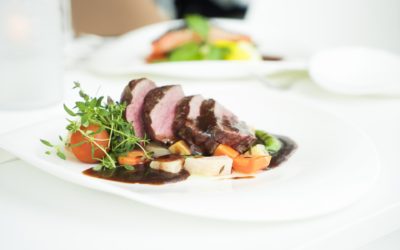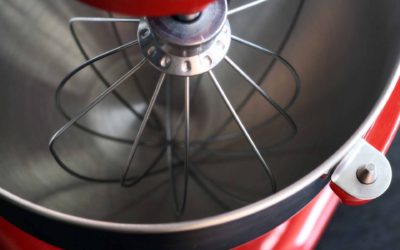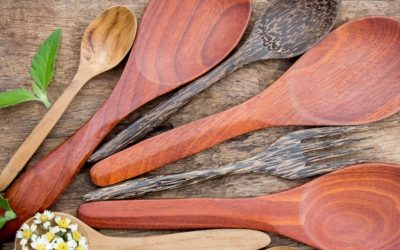Tipton’s Guide to Perfect Poultry Trussing
January 25, 2018Do you ever truss birds in your commercial kitchen?
Trussing is a fantastic cooking technique because it makes poultry cook faster, look more attractive and taste better. If your commercial kitchen prepares poultry, you don’t want to miss these trussing tips.
Trussing has multiple benefits for your commercial kitchen and your customers. The technique involves using skewers or string to tightly seal the bird’s cavity and keeps its shape while it cooks. Not only does this prevent the poultry from drying out, it also improves the presentation of the bird. The poultry maintains a more attractive shape, and when done right, the steam generated will puff out the bird’s skin, giving a very attractive look.
A beautifully-prepared bird can turn a traditional family meal into something even more magical. I want to give you my top tips for trussing in your commercial kitchen.
For this technique, you can choose to use either string or skewers. String works just as well as skewers, but most commercial kitchens choose to use skewers because they can reuse them for many years. So, without further ado, here’s how you can use skewers in your commercial kitchen for an exceptional trussing job.
First, you want to thoroughly clean your bird and pat it dry. Prepare the cavity of the bird as desired, by stuffing it, rubbing herbs on the inside, or leaving it untouched. With the bird’s breast facing up, pull the wings over the skin of the neck, and tuck them under the bird’s shoulder. Now, fold the neck skin over the opening. Use a skewer to keep it in place by threading it through the skin multiple times, just like you would if you were stitching fabric. Lastly, push the legs up against the bird’s body. Tuck in any extra skin between the thigh and the breast. Cross the bird’s legs and secure them with a skewer.
In a commercial kitchen, you always want to check your work to ensure your customers have the best experience. Have a look at your trussed bird. The wings should be stuck behind the bird’s shoulders. The cavity should be tightly closed. The legs should be held close to the body. Once you’ve checked this, your trussing is a success!
One more note regarding the use of metal skewers in your commercial kitchen: they get hot during cooking. Use care when removing them. Now, present your moist, attractively cooked bird to your customers. They’ll love it!
5 Keys to Creating the Perfect Restaurant Seating Areas
Restaurants are about so much more than just food. From the setting and layout of your restaurant to your choice of colors, it takes a lot more than an appealing menu to keep diners coming back for more. When setting up your restaurant, booths and chairs are important...
5 Essential Buying Tips for Your Next Food Prep Work Table
The right foodservice equipment is pivotal to the efficiency of your kitchen. One of the most important types of foodservice equipment for any kitchen is the work table. With limited room on countertops available for your food prep needs, the cooking process can drag...
Tips for Keeping Your Commercial Sink Sparkling Clean
Your commercial kitchen, just like your personal kitchen, must be kept clean at all times. With all of the cooking and food processing you do, it is inevitable that your sink gets messy. Cleaning up your commercial kitchen is incomplete without proper cleaning of your...
Food-Cutting Secrets to Beautiful Dishes
In the restaurant industry, presentation is often said to be just as important as the food itself. Using the right knowledge, skills and restaurant supplies, you can incorporate creativity into your presentation, making guests feel that they are getting something...
Top Space-Saving Tips for Commercial Kitchens
Top Space-Saving Tips for Commercial Kitchens Space is always an important consideration when setting up a kitchen, and this is even truer for commercial kitchens. With a strong focus on functionality and the kitchen supplies that meet the needs of your commercial...
5 Ways to Get the Most Out of Your Mixer
No one wants to eat off of dirty or tarnished silverware. A stand mixer is a highly useful piece of kitchen equipment to invest in. Although this type of kitchen equipment does not usually come cheap, it can last a lifetime when properly cared for. Despite all your...
Restaurant Prep Tool Selection Simplified
What’s a restaurant kitchen without high-quality prep tools that can withstand the pressure of frequent use? Whether you already have a restaurant you’re running, or you’re just planning to launch one, one vital factor that could make or mar your business is how you...
Beginner’s Guide to Choosing a Commercial Ice Cream Freezer
Ice cream is a delicious and appealing desert treat for everyone, young or old. Having made the decision to sell ice cream to your customers, whether you have a restaurant, convenience store, or specialty ice cream parlor, it is time to begin stocking up on the right...
How to Choose the Right Kitchen Scales for Your Restaurant
A food scale is an essential item in every restaurant’s store of kitchen supplies. Designed to take the guesswork out of food measurement and maintain consistent food serving sizes, food scales are indispensable kitchen supplies in the commercial kitchen. With such a...
Beer Chilling Systems: Which Type Is Right for My Restaurant?
A refrigeration unit is integral to the functioning of any restaurant. Beers are best served cold - there’s no questioning that! But which beer chilling system is the best? From reach-in coolers to glycol chillers, a beer chilling system is an important piece of...
What Equipment Will I Need to run a Food Truck?
There’s a lot of planning that goes into starting your own food truck business. Before you hit the road with your delicious food offerings, you’ll need to fill up your truck with all the right foodservice equipment. Considering the lengthy list of possible items to be...
8 Types of Food Thermometers: What You Need To Know
Food thermometers are essential restaurant supplies for your commercial kitchen. They ensure that foods prepared in your commercial kitchen are cooked to the right temperature and held at that temperature for as long as necessary to kill any harmful bacteria. This...
How to Identify the Best Food Processor for Your Needs
Highly versatile and extremely efficient, food processors are designed to take away the hard work from repetitive kitchen activities. This type of cooking equipment can quickly become an invaluable tool in your kitchen. From chopping, to shredding, grinding, mincing,...
6 Keys to Choosing the Best Chafing Dishes for Your Restaurant
The chafing dish, also known as the chafer, is an essential piece of restaurant equipment for any establishment that wants to keep food hot. This type of restaurant equipment gets its name from the French word, chauffer, which means to heat, and it’s easy to see why....
Turning up the Dial on Commercial Fryers: How to Choose One for Your Restaurant
Fried food is a well-loved favorite. This is a fact. It also makes a fryer an important piece of equipment to have in your commercial kitchen. Just consider how many appetizers and sides require frying: onion rings, French fries, and fried green tomatoes are just a...















